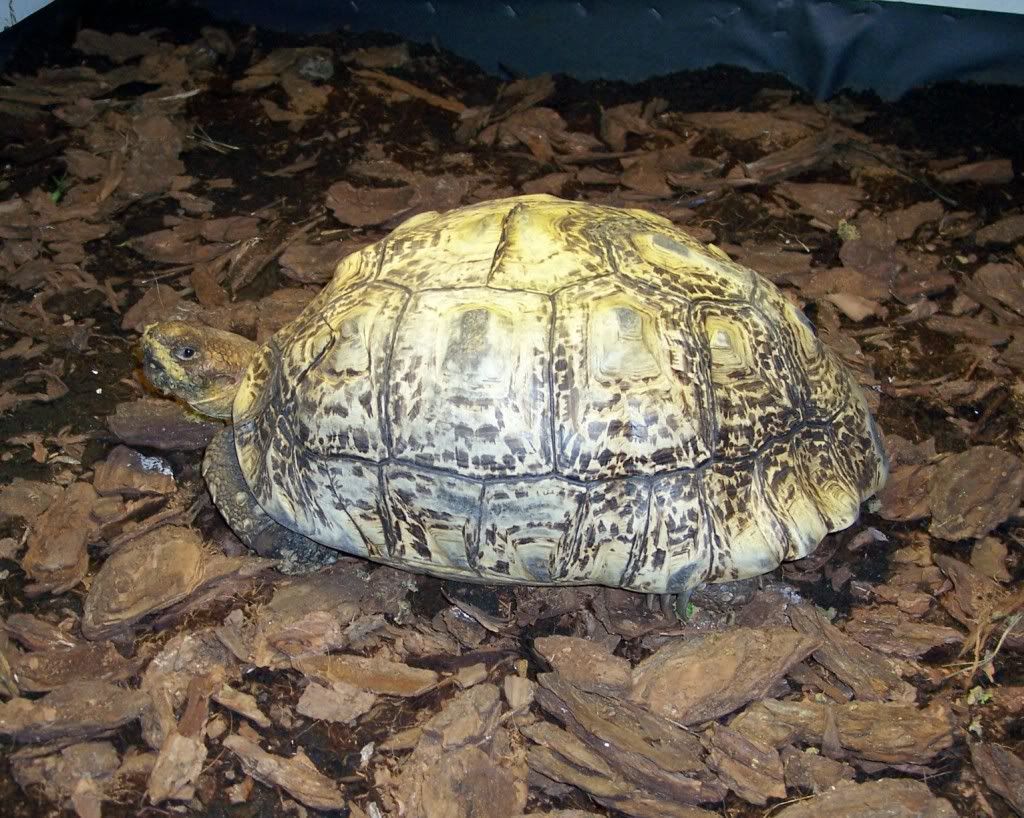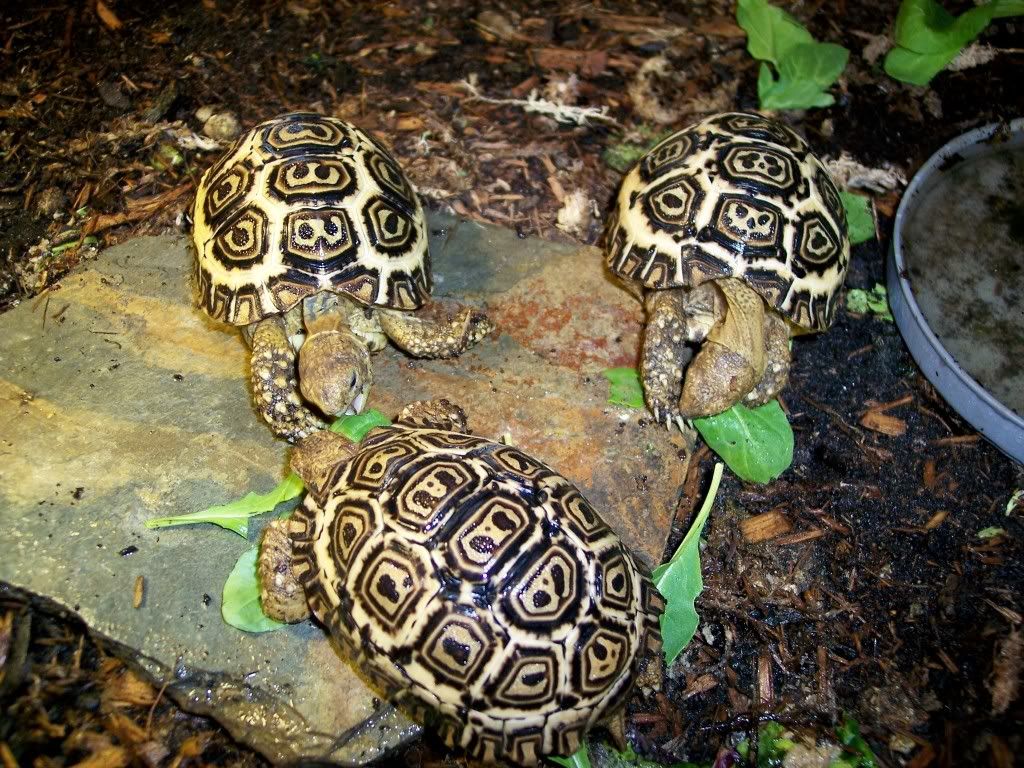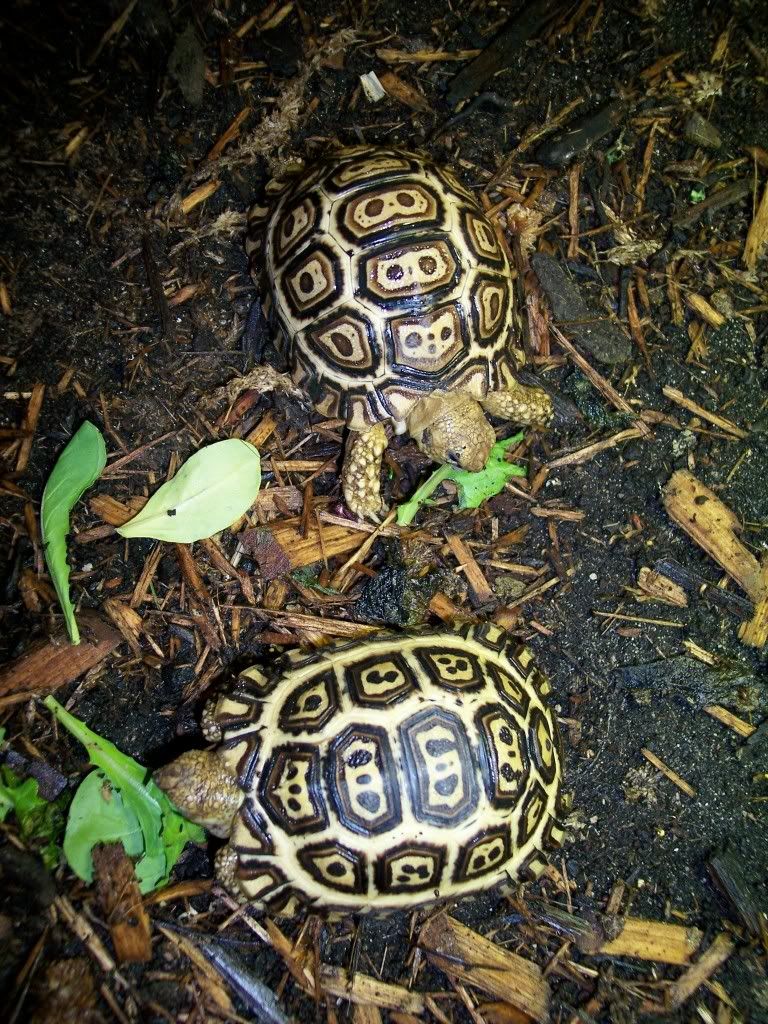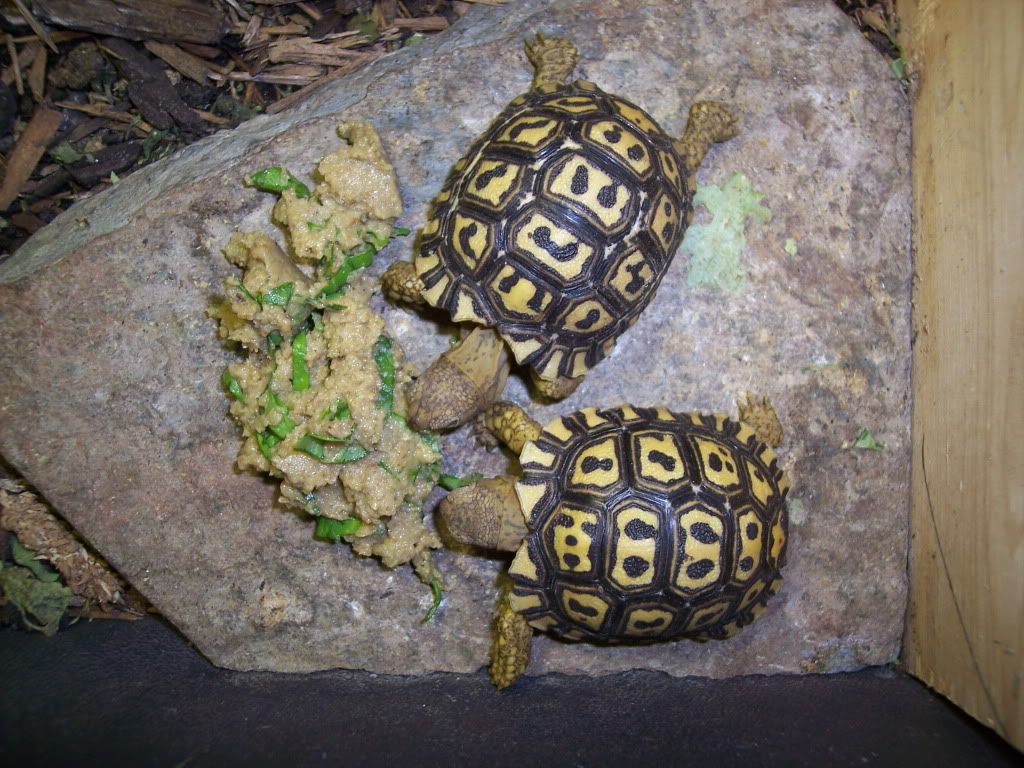







yagyujubei wrote:New thinking here is that heightened moisture helps prevent pyramiding shells, which is a huge problem here. So far, it seems to be working, but I have to keep the temps up to prevent cooling.
yagyujubei wrote:so I he bred her to a sulcata male last year. She laid a clutch of eggs which weren't incubated. Maybe I'll get hybrid eggs this year.
Ales wrote:yagyujubei wrote:New thinking here is that heightened moisture helps prevent pyramiding shells, which is a huge problem here. So far, it seems to be working, but I have to keep the temps up to prevent cooling.
Why would he want to do that? I hate hybrids, especially tortoises. What do the babies look like?
Smeegle wrote:I kept two of these for at least a decade in my youth until my mom consulted Rod Patterson who suggested we donate them to the Everard Read estate, which we did.
Anyway, my point is that I think the animal in the first picture looks very sickly. I agree that the substrate is wrong, as well as possibly the diet and the lack of sunshine. They thrive in the dry Highveld where I used to live.
You can't just keep them in a moist cage and feed them on greens. Please, prove me wrong here...
Bushviper wrote:I dont believe the moist substrate has anything to do with pyramiding. My biggest tortoises are over 50 years old and show no signs of pyramiding and they are not kept moist at all. I have also heard of the SA pardalis being called "blonds" in the US. I think this is because they are known to hibernate where the babcocki do not hibernate well. In actual fact the colours do not indicate anything as pardalis have almost the same colours.
Keeping them in a northern climate would be difficult but sunlight would be the best solution. In winter I know this will not be possible. Whatever you do do not give them damp surroundings to hibernate in. That will kill them. They do not occur in "tropical rain forests" but prefer dry savannah bushy regions.
As you can see these are not kept in damp surroundings and are normal. I suspect the diet will be far more important. I also think your female is too small to breed and please do not let a sulcata anywhere near her.
yagyujubei wrote: She's about 10 or 11, 15" and 18 pounds.
MrG wrote:How long does it take for eggs to hatch?
Return to Exotic chelonians and crocodilians
Users browsing this forum: No registered users and 1 guest